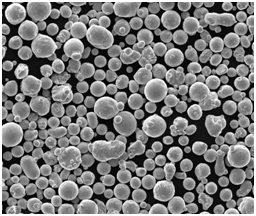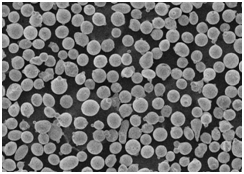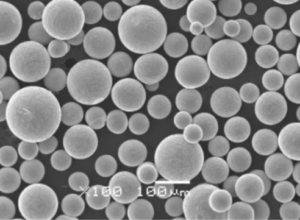Overview of Stellite 21 Powder
Stellite 21 powder is a cobalt-based alloy known for its remarkable resistance to wear, corrosion, and high-temperature performance. Developed originally by Elwood Haynes in the early 20th century, Stellite alloys have become vital in industries that require durability under extreme conditions. Stellite 21, in particular, stands out due to its impressive balance between hardness, toughness, and corrosion resistance. Often utilized in applications involving cutting tools, valves, turbine engines, and high-performance coatings, it is one of the top choices for extending component lifespan under abrasive and high-stress environments.
In this article, we’ll break down everything you need to know about Stellite 21 powder: from its composition, characteristics, advantages, and disadvantages, to its various applications, models, specifications, suppliers, and prices. Let’s dive into what makes this metal powder a must-have in heavy industries and beyond.

What is Stellite 21 Powder?
Stellite 21 powder is primarily a cobalt-chromium alloy, which is enhanced with small amounts of other elements like molybdenum and nickel to provide additional strength and performance features. It’s widely recognized for its ability to retain its hardness even at high temperatures and in corrosive environments. The alloy is typically used in powder form for coating applications like thermal spraying, laser cladding, or powder-bed additive manufacturing.
Stellite 21 Powder Composition
The core of Stellite 21 powder is its balanced chemical makeup, which gives it its distinct properties.
| Element | Percentage Composition |
|---|---|
| Cobalt (Co) | 55-60% |
| Chromium (Cr) | 27-30% |
| Molybdenum (Mo) | 4.5-6% |
| Nickel (Ni) | 2-3% |
| Iron (Fe) | <3% |
| Carbon (C) | 0.20-0.30% |
| Silicon (Si) | <1% |
| Manganese (Mn) | <1% |
As seen in the table above, cobalt forms the bulk of the alloy, while chromium provides the vital corrosion and oxidation resistance. Molybdenum further enhances the material’s strength and resistance to pitting, making it a suitable choice for harsh operational environments.
Characteristics of Stellite 21 Powder
- Wear Resistance: Thanks to its cobalt base, Stellite 21 powder is renowned for its excellent wear resistance. It holds up well against abrasion, galling, and erosion, making it perfect for high-wear applications.
- Corrosion Resistance: The high chromium content enables the alloy to resist corrosion, even in chemically aggressive environments, including those involving sulfur and chlorine.
- High-Temperature Stability: One of the unique features of Stellite 21 powder is its ability to maintain hardness and strength at elevated temperatures (up to 950°C). This property makes it highly desirable for turbine engine components and heat exchangers.
- Toughness and Hardness Balance: Unlike some harder materials that tend to be brittle, Stellite 21 strikes a good balance between toughness and hardness, ensuring durability under impact stresses.
Applications of Stellite 21 Powder
Stellite 21 powder is used across various industries where durability and performance under harsh conditions are key requirements. From aerospace to medical implants, here’s where it makes its mark:
| Industry | Application |
|---|---|
| Aerospace | Turbine blades, heat exchangers, fuel nozzles |
| Oil and Gas | Valve seats, drill bits, pump components |
| Automotive | High-performance engine parts, camshafts |
| Medical Devices | Orthopedic implants, surgical instruments |
| Power Generation | Steam and gas turbines, boiler components |
| Mining & Earthmoving | Wear plates, grinding mills, crusher parts |
| Marine Engineering | Propeller shafts, marine valves, pump impellers |
Why is Stellite 21 Powder Used in These Applications?
- Aerospace: The alloy’s ability to retain mechanical strength at high temperatures makes it essential in turbine engines, which operate under extreme heat and pressure. Its corrosion resistance ensures longevity in such challenging environments.
- Oil and Gas: The harsh, chemically aggressive conditions found in oil drilling and extraction require a material like Stellite 21 that can resist wear and corrosion. Components like valve seats are subject to both high stress and the erosive effects of fluids and gases, making this alloy an ideal choice.
- Medical Field: Due to its biocompatibility and wear resistance, Stellite 21 powder is frequently employed in making durable orthopedic implants and surgical tools. It offers a longer lifespan compared to other materials.
Comparison of Different Metal Powder Models for Stellite 21
When choosing Stellite 21 powders for a particular application, you might come across various models, each suited to specific processes such as laser cladding, plasma spray, or additive manufacturing.
Common Stellite 21 Powder Models and Their Descriptions
| Model | Description |
|---|---|
| Stellite 21-G | Fine powder, best suited for thermal spraying processes |
| Stellite 21-LC | Specifically designed for laser cladding, provides excellent bond strength |
| Stellite 21-AM | Optimized for additive manufacturing, ensures consistent layer deposition |
| Stellite 21-HP | High-performance powder used in plasma spray techniques for coating applications |
| Stellite 21-HVOF | Used in High-Velocity Oxy-Fuel (HVOF) spraying, delivering dense coatings |
| Stellite 21-PW | Coarse powder, preferred for powder welding and plasma-transferred arc welding |
| Stellite 21-SC | Standard coating powder for general-purpose wear and corrosion protection |
| Stellite 21-SP | Super-fine powder ideal for laser sintering and powder-bed fusion |
| Stellite 21-AP | A general-purpose powder designed for aerospace and automotive part coatings |
| Stellite 21-M | Designed for high-performance metal injection molding (MIM) processes |
Each of these models is formulated to address specific needs within different manufacturing and coating processes. For example, Stellite 21-LC is optimized for laser cladding, ensuring a strong metallurgical bond, while Stellite 21-HP performs exceptionally well in plasma spray techniques, delivering high-density coatings.






Advantages of Stellite 21 Powder
- Exceptional Wear Resistance: Stellite 21 is virtually unmatched when it comes to wear resistance in high-stress applications. This characteristic alone makes it invaluable in industries like aerospace and oil & gas.
- High Corrosion Resistance: The alloy can resist corrosion in environments where other materials, including some stainless steels, may fail. This makes it ideal for applications where contact with chemicals is frequent.
- Temperature Stability: Even at high temperatures (up to 950°C), Stellite 21 retains its mechanical properties. This is particularly important for turbines and engines that operate under extreme heat.
- Biocompatibility: Because it does not react adversely with biological tissues, it is used in medical implants, offering both durability and compatibility with the human body.
Advantages vs Disadvantages
| Advantages | Disadvantages |
|---|---|
| High wear resistance in abrasive environments | Expensive compared to some stainless steel alternatives |
| Excellent performance at high temperatures | Requires specialized techniques for processing |
| Superior corrosion resistance in harsh conditions | May require post-processing to achieve optimal properties |
| Biocompatible for medical applications | Potential for brittleness under severe impact stress |
Comparison of Stellite 21 Powder to Other Metal Powders
To better understand why Stellite 21 powder stands out, let’s compare it to other common metal powders such as Inconel 625, Tungsten Carbide, and Hastelloy C-276.
Stellite 21 Powder vs Inconel 625
- Wear Resistance: Stellite 21 has superior wear resistance compared to Inconel 625, especially in abrasive environments.
- Corrosion Resistance: While both materials offer good corrosion resistance, Inconel 625 performs better in environments involving high chloride concentrations.
- High-Temperature Stability: Stellite 21 excels in applications where wear resistance at high temperatures is crucial, whereas Inconel 625 is more suited to oxidation resistance.
Stellite 21 Powder vs Tungsten Carbide
- Hardness: Tungsten Carbide is harder, but Stellite 21 provides better toughness and is less brittle under impact stresses.
- Cost: Tungsten Carbide is more cost-effective for some wear applications but lacks the versatility and corrosion resistance of Stellite 21.
Stellite 21 Powder vs Hastelloy C-276
- Corrosion Resistance: Both powders provide excellent corrosion resistance, but Hastelloy C-276 may perform better in highly acidic environments.
- Temperature Stability: Stellite 21 is favored in high-temperature wear applications, whereas Hastelloy C-276 is used primarily for corrosion protection at lower temperatures.
Specifications, Sizes, and Standards for Stellite 21 Powder
Depending on the specific application, Stellite 21 powder comes in a variety of grades, sizes, and specifications. Below are the typical size ranges and standards.
| Specification | Description |
|---|---|
| Powder Size | 15-53 µm, 45-106 µm, 53-150 µm |
| Manufacturing Standards | ASTM F75, AMS 5385, AMS 5796 |
| Density | 8.4 g/cm³ |
| Melting Point | 1315-1450°C |
| Hardness (HRC) | 30-40 HRC (as deposited) |
Where to Buy Stellite 21 Powder and Pricing
Several suppliers provide Stellite 21 powder globally. Prices may vary depending on the required quantity and specific powder model.
| Supplier | Country | Price (per kg) | Notes |
|---|---|---|---|
| Höganäs AB | Sweden | $200-$250 | Offers a wide range of powder models |
| Carpenter Technology Corp | USA | $180-$230 | Specializes in custom powder formulations |
| Oerlikon Metco | Switzerland | $220-$270 | Provides additive manufacturing solutions |
| Praxair Surface Technologies | USA | $190-$240 | Known for high-quality coating powders |
| VDM Metals | Germany | $210-$260 | Offers global shipping and delivery |
Prices fluctuate based on powder form, model, and order size.

FAQs
| Question | Answer |
|---|---|
| What is Stellite 21 powder used for? | It’s used for coatings, additive manufacturing, and metal part production in high-wear environments. |
| Is Stellite 21 biocompatible? | Yes, it is often used for medical implants due to its excellent biocompatibility. |
| Can Stellite 21 be machined? | Yes, but machining Stellite 21 requires specific tools and techniques due to its hardness. |
| What is the melting point of Stellite 21? | The melting range is between 1315-1450°C. |
| How does Stellite 21 compare to other Stellite alloys? | Stellite 21 offers a better balance of toughness and hardness compared to some of the harder Stellite alloys. |

